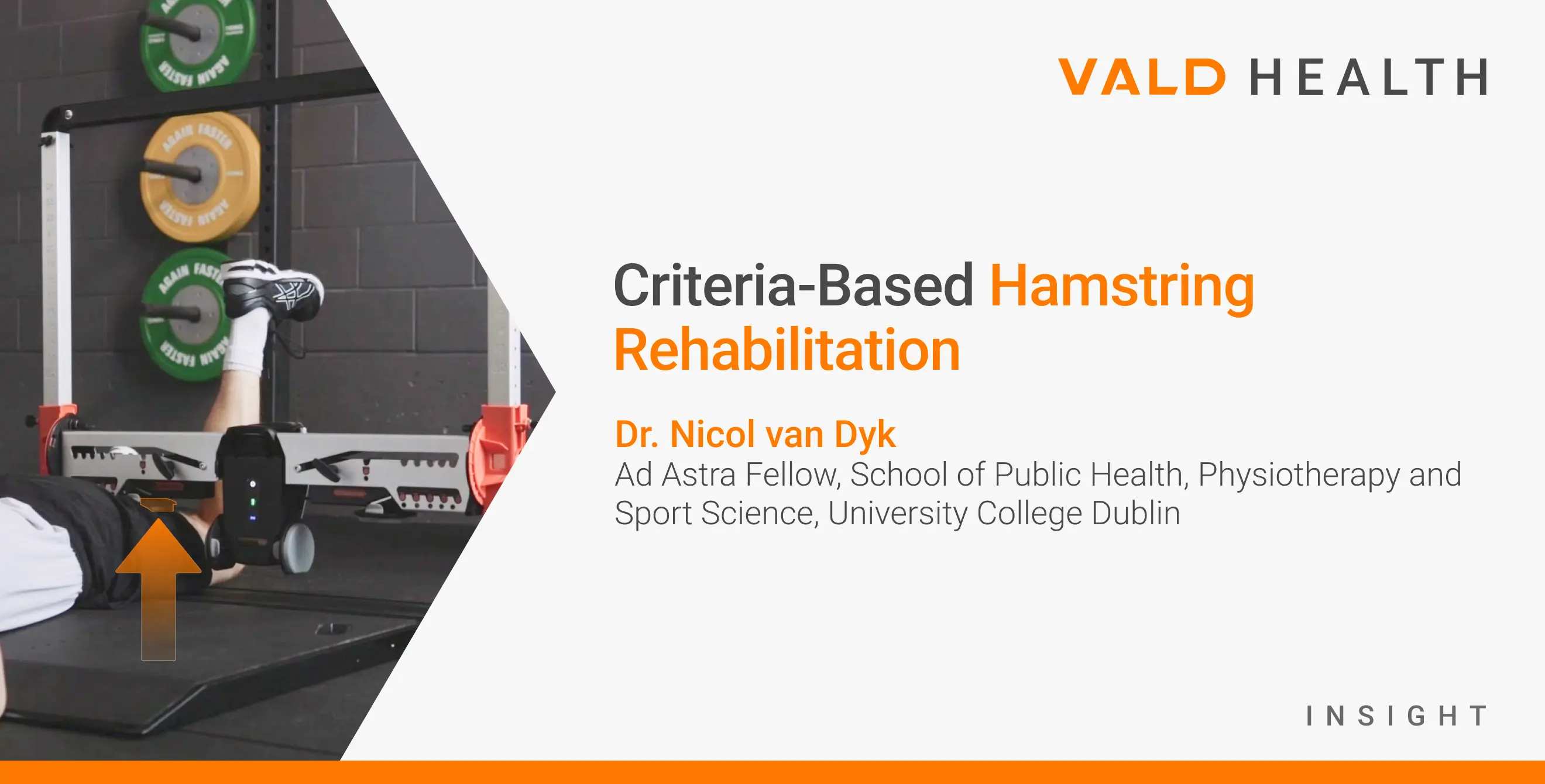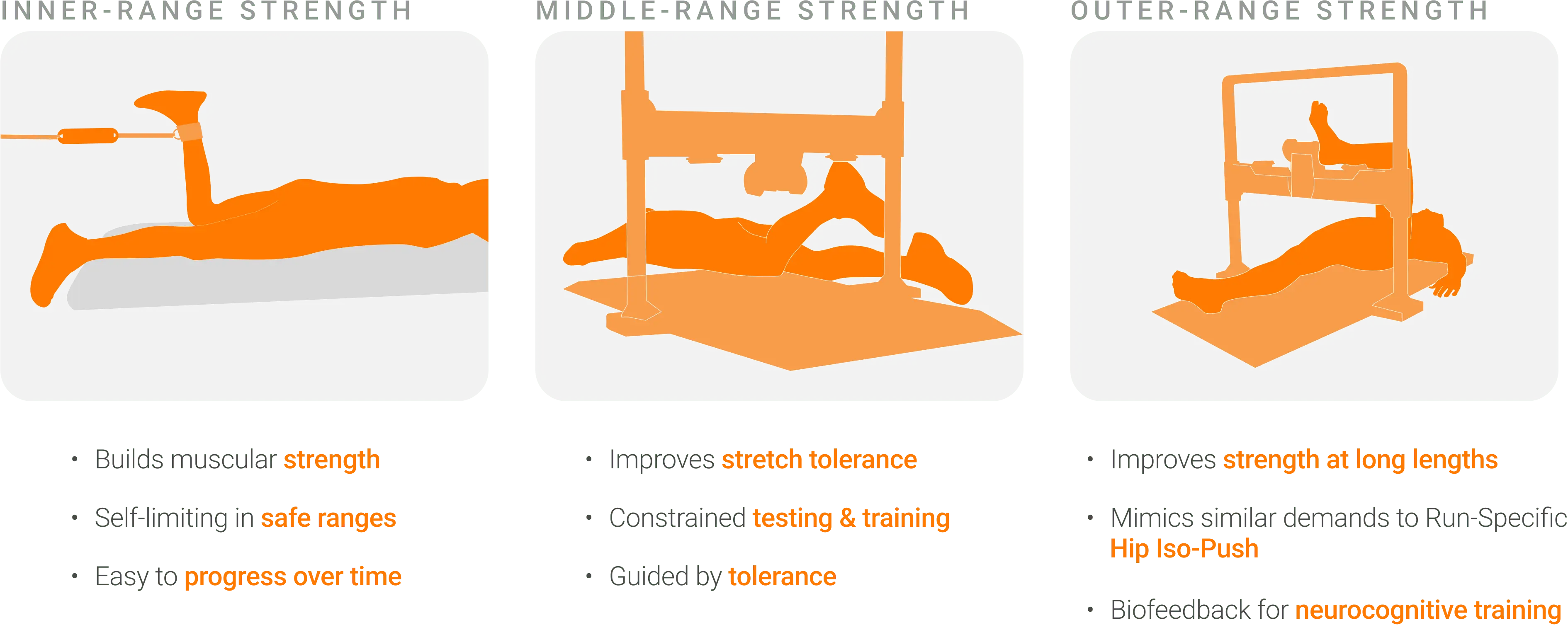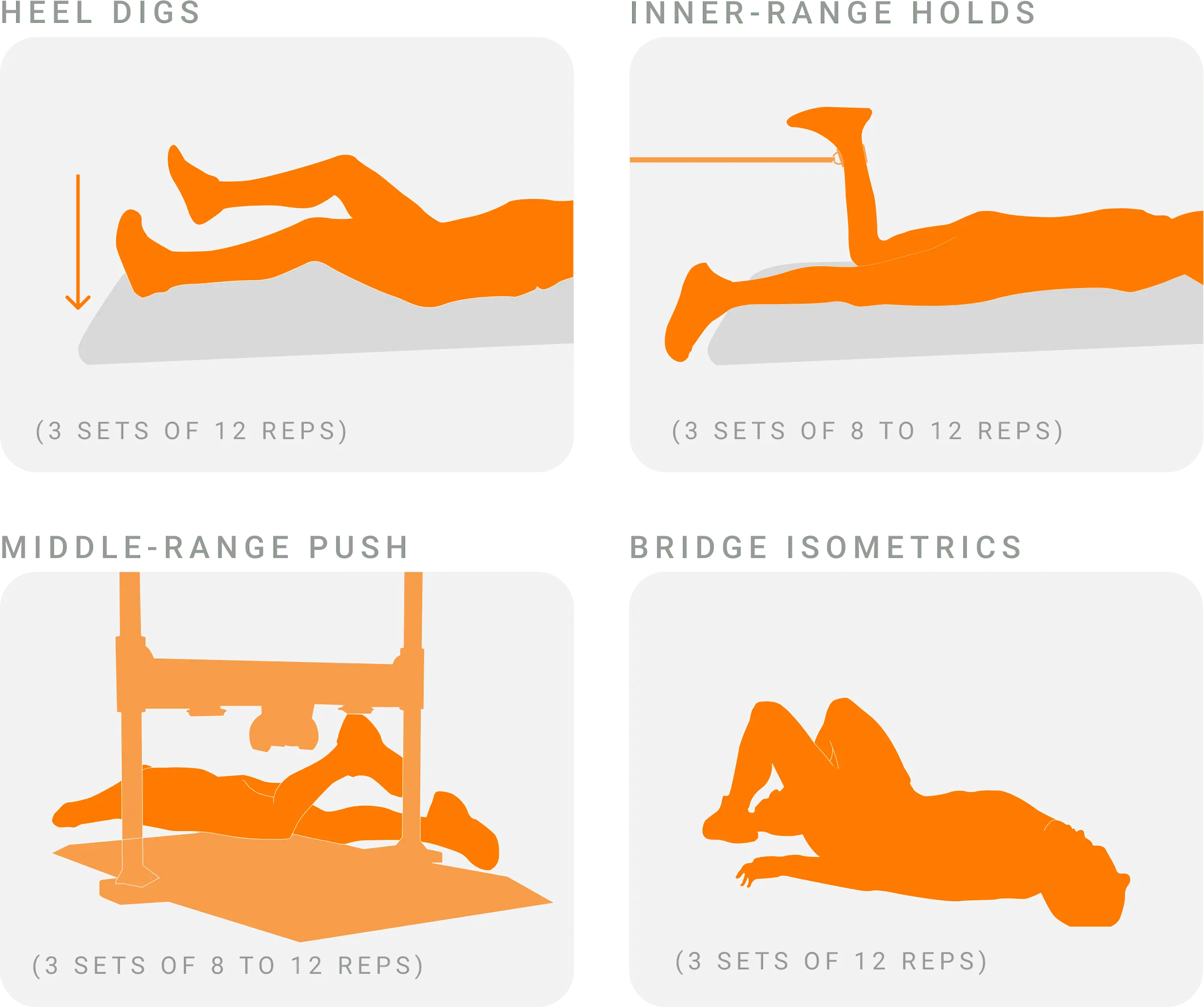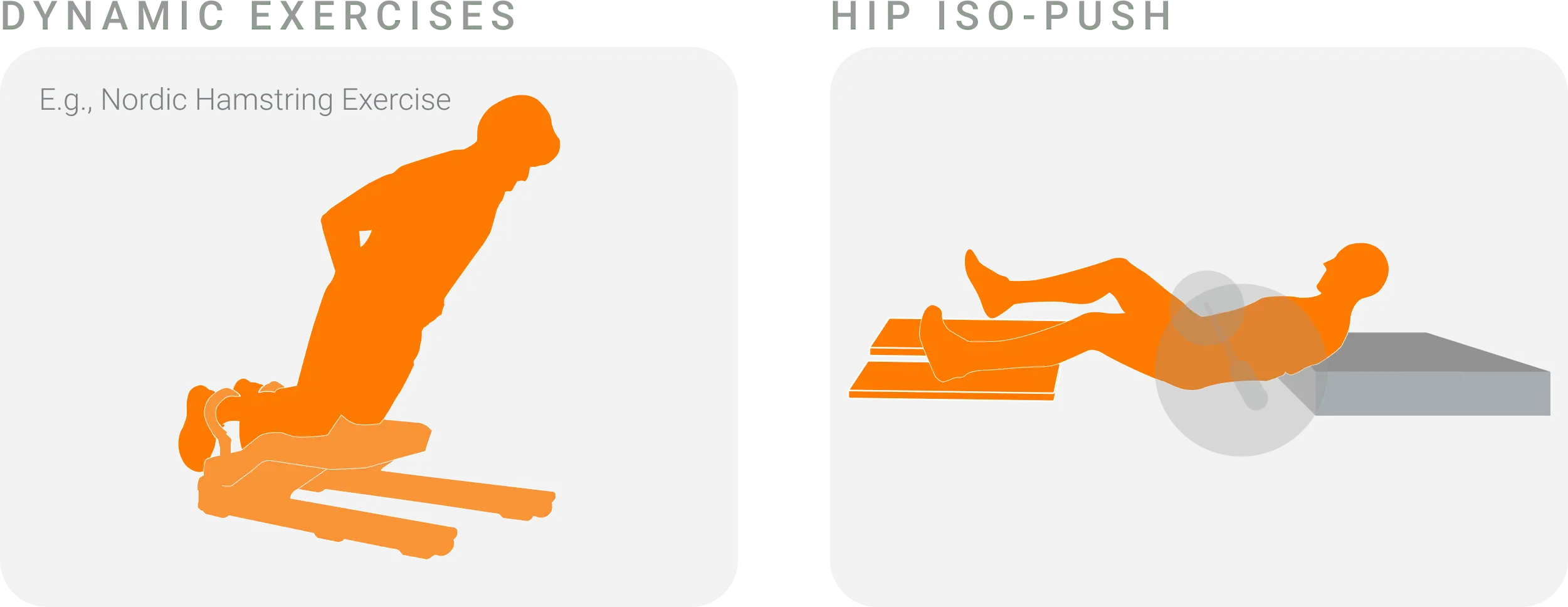Criteria-Based Hamstring Rehabilitation
Available in:
EN
About the Author
Nicol van Dyk, PT, PhD, is a specialist sports physiotherapist, clinical researcher and performance health consultant. He is currently an Ad Astra Fellow at the School of Public Health, Physiotherapy and Sport Science at University College Dublin, and also holds the role of deputy editor for the British Journal of Sports Medicine.
He previously worked at the Sports Science Institute of South Africa (SSISA), Aspetar Sports Medicine Hospital and as medical research lead for the Irish Rugby Football Union.
With experience across multiple sporting environments and cultural contexts, his research continues to focus on musculoskeletal health, injury prevention and optimizing high-performance teams.
Case Background
A 24-year-old recreational football athlete suffered a posterior thigh injury during a league game. The injury occurred without contact in the 80th minute while sprinting towards the ball with a slight change of direction.
Unable to continue playing, the athlete felt immediate, severe localized pain in his posterior thigh when walking. Following a comprehensive assessment from the medical team, it was determined that he had a Grade II biceps femoris tear with no signs of neural involvement.
This article explores the role of isometric testing and training within the framework of a typical hamstring injury rehabilitation process, as outlined in the following table (Aspetar Orthopaedic and Sports Medicine Hospital, 2025).
| Stage | Objective |
|---|---|
| 1 | Promote healing and early optimal loading of the injured tissue
|
| 2-3 | Regain full muscle function
|
| 4-6 | Integrate full sport-specific participation
|
The Role of Isometrics in Rehabilitation
Isometric testing and training play a key role in each stage of rehabilitation. Importantly, isometrics help us track our progress through the rehabilitation process. We use these results to determine increases or changes to exercises and training programs.
Isometric testing and training play a key role in each stage of rehabilitation.
Muscle injuries that involve tendons or more proximal hamstring injuries often respond well to early isometric interventions, allowing us to load areas of the injured muscle-tendon unit more specifically.
For a deeper dive into isometric testing and its applications across rehabilitation, check out our free Practitioner’s Guide to Isometrics.
Early-Stage Isometric Testing
Testing Through Range

Initially, short-lever isometrics are initiated, as we would not expect much force to be produced in this position. Pain may even prevent muscle contraction in this position in early stages of rehabilitation.
Isometric testing is important for rehabilitation progression. Although initial pain may halt the exercise, we generally see improvements in strength as the pain settles.
Therefore, if an athlete demonstrates pain and a drop in strength, we will not progress them in that session. Conversely, if both strength increases and pain decreases, we typically progress rehabilitation or increase the intensity.
…if both strength increases and pain decreases, we typically progress rehabilitation or increase the intensity.
Strength in the injured limb is usually assessed as a percentage of the strength in the uninjured limb, accepted as a proxy for expected strength in the injured limb at the end of rehabilitation.
Early Isometric Training
We often use isometric exercises early on to achieve optimal loading while promoting tissue healing and scar formation. A useful moniker at this stage is “a little a lot often.”

Examples of early-stage isometric exercises.
Mid-Stage Isometric Testing
Usually, by this stage, we have dropped the inner range isometric testing as the pain would have settled, and strength has returned to levels comparable to the uninjured side. However, it may continue to be useful for hamstring injuries with tendon involvement.
Increases in strength measures and ROM, along with reduced or no pain, are good indicators that we can push harder. Once the program reaches sufficient intensity, we would expect slight decreases in either strength or range if testing occurs within a 24- to 36-hour cycle.
Increases in strength measures and ROM, along with reduced or no pain, are good indicators that we can push harder.
This is a general indication of a normal training load response and evidence that the exercise dosage and training are sufficient.
Clinicians must take all available information into their clinical reasoning process. If not already progressed, we would advance from a bridge test to a single-leg bridge test at this stage.
Mid-Stage Isometric Training

Bridge progressions used in mid-stage hamstring rehabilitation.
Another recent development would be to utilize NordBord or the Nordic hamstring exercise early in the rehabilitation process.
Performing a bilateral isometric kneeling exercise is often useful to help athletes overcome anxieties about loading the injured muscle, and it acts as preparation for moving into eccentric exercises.
Performing a bilateral isometric kneeling exercise is often useful to help athletes overcome anxieties about loading the injured muscle, and it acts as preparation for…eccentric exercises.
The biofeedback from NordBord can be useful to assess how comfortable the athlete is with weight shift and distribute the load between the injured and uninjured limbs.
Return-to-sport hamstring training using NordBord’s Isometric Training Mode in the Iso 60° position.
End-Stage Isometric Testing
To determine progression and inform decision-making around exercise programs and training, we continue with mid- and outer-range testing.
We have seen discrepancies in the single-limb handheld dynamometer (HHD), bilateral fixed-frame dynamometer (FFD) and fixed-point dynamometer (FPD). Athletes may show a significant difference in unilateral testing, but nothing in bilateral testing.
Regardless of the difference in testing position, it also helps the practitioner understand the mechanisms still responsible for the inhibition or difference. Isometric holds may indicate a muscle endurance or fatigue issue at this stage, often seen in the impulse of the strength curve.
Isometric holds may indicate a muscle endurance or fatigue issue at this stage, often seen in the impulse of the strength curve.
By this stage, the athlete is underway toward running at high speed, change of direction and sport-specific drills incorporated into the rehabilitation.
We continue to consider where isometric exercises may be useful to add additional loads or achieve specific muscle contraction and activation patterns. Any of the options discussed are considered, with variation in weight, position, duration, bilateral versus unilateral and intensity.
While this case focuses on the role of isometrics, it is also necessary to incorporate dynamic exercises throughout rehabilitation.
While this case focuses on the role of isometrics, it is also necessary to incorporate dynamic exercises throughout rehabilitation.
End-Stage Loading Options
As athletes reach the final stages of their rehabilitation, exercises such as the Nordic hamstring exercise and Hip Iso-Push provide targeted ways to address muscle function under load.

These end-stage loading options help clinicians resolve remaining strength deficits, address asymmetries and build athlete confidence before returning to sport.
Through the process, objective data from isometric and dynamic testing supports clearer decision-making and more tailored rehabilitation strategies – particularly for complex or recurrent injuries.
If you are interested in how VALD’s human measurement technology can support your approach to hamstring rehabilitation, including the use of isometrics across every stage of recovery, explore our Practitioner’s Guide to Isometrics. For more information or to integrate VALD technology into your practice, reach out to our team here.
References
- Aspetar Orthopaedic and Sports Medicine Hospital. (2025). Aspetar hamstring protocol. Aspetar Clinical Guidelines. Retrieved July 3, 2025, from https://www.aspetar.com/en/professionals/aspetar-clinical-guidelines/aspetar-hamstring-protocol
